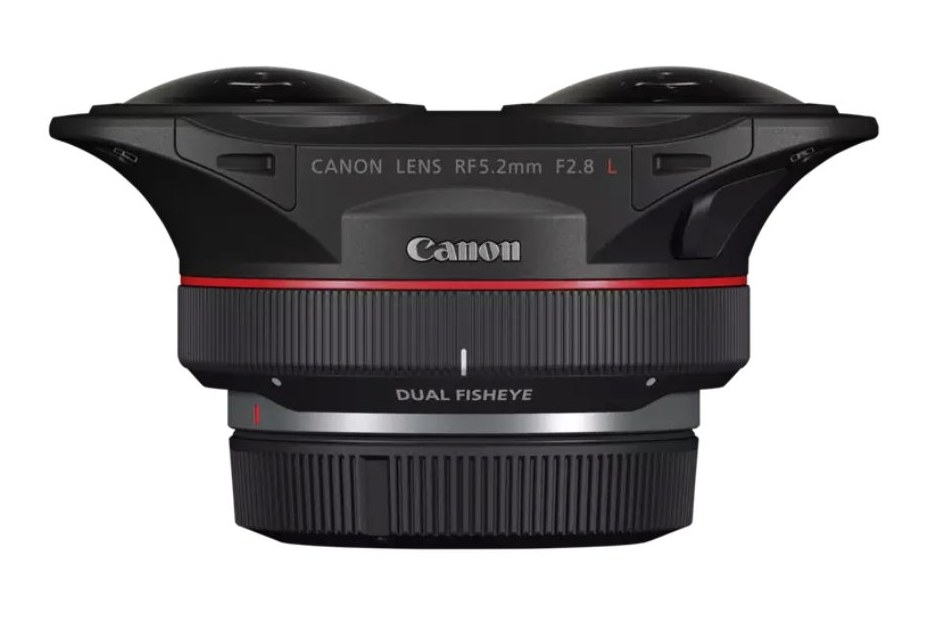

The lens is a dual fisheye, made for stereo 180 VR video. It is originally designed to be used on Canon R5 only and presents a kind of big oval shape, It’s meant to draw two complete (they say) 190degrees circles in the 8k video area of R5’s sensor.
The interpupil distance is set to 6 cm, the lens plus prism construction fits the two image circles in the same frame of the video, simplifying the stereo pairing process if compared to a twin camera system.
The lens has a twin but separate iris system (from 2.8 to 16) in order to keep exposure in perfect synchronization, and a manual only focusing system that acts on the two lens systems but allows single-lens fine-tuning.
With an introductory price of 2000$ plus camera and the “VR180” professional market as the only market, it sets high expectations in the whole community.
This means Canon is considering VR professionals as a profitable and interesting market. Enough to build such a specific lens that poses a serious amount of technical issues. If you think using prisms in a fisheye light path is an easy task I should remember you that in these lenses focusing is made by moving elements by fractions of mm.
I’m really crying to put my hands on this and discover what this unique engineering masterpiece is capable of.




